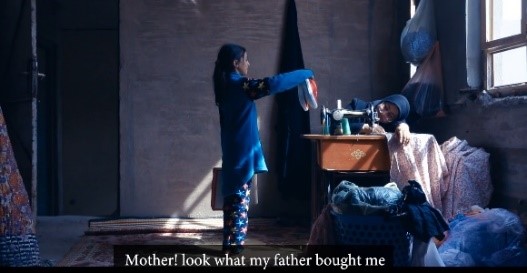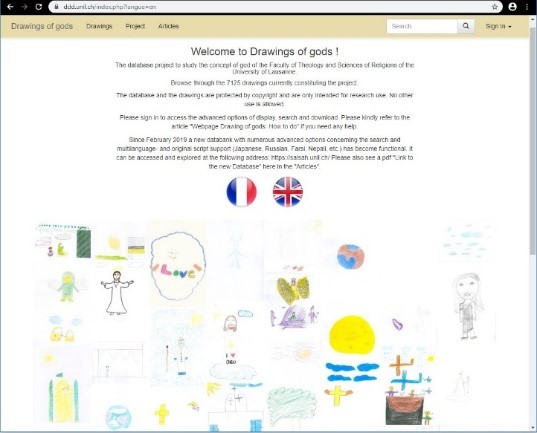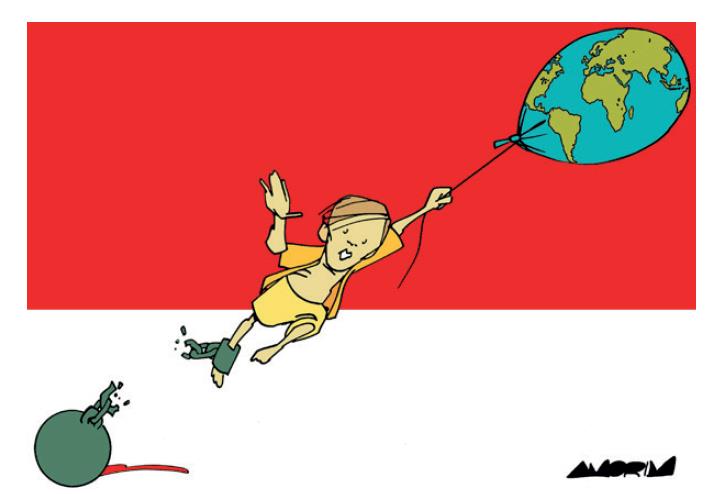Module 13: Children and youth
#Faith4Rights toolkit
Full text of commitment XIII
|
We pledge to build on experiences and lessons learned in engaging with children and youth, who are either victims of or vulnerable to incitement to violence in the name of religion, in order to design methodologies and adapted tools and narratives to enable religious communities to deal with this phenomenon effectively, with particular attention to the important role of parents and families in detecting and addressing early signs of vulnerability of children and youth to violence in the name of religion. - “Don’t let anyone look down on you because you are young, but set an example for the believers in speech, in conduct, in love, in faith and in purity.” (1 Timothy 4:12) |
Context
Children and youth are not only our future; they are also members of society in the present. Investment in improving their education today shapes humanity for generations to come. Today’s children grow up faster than ever thanks to remarkable but also dangerous communications technologies that expose children to conflicting influences. If education neglects the needs of today’s children and youth we all miss a great opportunity to build a better world where people do not only travel more but also better understand and learn from each other, even without such travel. Despite some perceptions of young people as potentially violent or prone to extremism, the majority of young people remain peaceful. Fears and assumptions about youth violence – or youth propensity to join extremist groups – fuel structural discrimination against young people, which leads to violation of their rights. Children and youth should be empowered to shape the decisions that affect their lives through opportunities for meaningful participation in their communities and societies.
Additional supporting documents
In support of the peer-to-peer learning on commitment XIII, the training file should include: the Secretary-General’s Plan of Action to Prevent Violent Extremism (2015); the thematic reports on preventing violent extremism by the High Commissioner (2016) and the Special Rapporteur on human rights and counter-terrorism (2020); the UNESCO guide for policy-makers on “Preventing violent extremism through education” (2017) and the United Nations Youth Strategy (2018). UN Security Council resolutions 2250 (2015) and 2419 (2018) recognize the “important and positive role” that young people play in peacebuilding. Furthermore, in 2017, Adyan Foundation and the Institute of Education at University College London published a white paper “For Interreligious Collaboration and Policy Making in Addressing Radicalization and Violent Extremism”. In 2019, Arigatou International and UNICEF launched a multi-religious study on the Convention on the Rights of the Child, entitled “Faith and Children’s Rights”, which specifically refers to commitment XIII and other commitments on “Faith for Rights”.
Furthermore, the UN Plan of Action to Safeguard Religious Sites (2019) recommends that religious leaders “Reach out within their own community to individuals or groups who can be prone to radicalization and possible recruitment by violent extremist groups and terrorist organizations; Engage with women and youth, in particular, to build strong counter-narratives to hatred and alienation; Promote education initiatives to highlight the role of religious sites in bringing people together, with particular stress on education activities at the local level involving youth and communities living around religious sites.”
Peer-to-peer learning exercises
Unpacking: Participants break down commitment XIII into different components. They identify relevant action points and corresponding responsibilities from the perspective of their own local environments. What needs to change and who should do it, in their view? What are their own responsibilities under this commitment in particular? (Individual exercise for five minutes followed by ten minutes of a full group discussion on the differences between individual listings).
Linking the dots: Discuss the relationship between these elements and link them to commitments VII and XII (collective exercise for 10 minutes).
Tweeting: Summarize the commitment XIII within 140 characters (individual exercise for 5 minutes). One possible result of this tweeting exercise could be: “We commit to engage with children and youth against violence in the name of religion and to promote their active participation in decision-making”. The facilitator could also discuss children’s freedom of religion or belief in relation to the digital environment, noting that the Committee on the Rights of the Child “encourages States parties to introduce or update data protection regulation and design standards that identify, define and prohibit practices that manipulate or interfere with children’s right to freedom of thought and belief in the digital environment, for example by emotional analytics or inference. Automated systems may be used to make inferences about a child’s inner state. They should ensure that automated systems or information filtering systems are not used to affect or influence children’s behaviour or emotions or to limit their opportunities or development.”
Translating: Similar to the tweeting exercise, participants could be asked to “translate” this commitment into child-friendly language or into a local dialect. The idea is to stimulate discussion about the most important elements and appropriate ways of simplifying the message, without losing the substance of the commitment.
Critical thinking: A critical discussion on the relationship between these elements could include asking if participants disagree with any of them? Which of these elements is more likely to be influenced by faith actors? What is the difference between “preventing violent extremism” and “addressing violence in the name of religion”? Is violent youth extremism predictable? How? What are the different roles and responsibilities in this area? Does the family have the primary responsibility? Are schools, including in terms of religious education, well equipped to detect and pre-empt violent extremism of young people? What are the root causes of youth involvement in violent extremism and how can these be tackled? How can faith actors support young people’s meaningful participation in decision-making and in society as well as empower them within their communities? (Collective exercise for 20-30 minutes).
Storytelling: Participants share relevant situations they have witnessed pertaining to this commitment and what they learned from it. In particular, was there a situation where early signs of vulnerability of children and youth to violence in the name of religion were detected and addressed? Who are the different actors in their respective areas and how can they better address violence in the name of religion? Provide examples of the positive or negative role played by the media in this respect (collective exercise for 15 minutes). The facilitator could also refer to an article written in 2019 by Nicola Benyahia, the mother of an ISIL fighter who died in Syria. See also the case to debate in the Annex (scenario B).
 Short films may also be a powerful way of narrating stories that affect children. For example, the short film Cinderella, which was awarded at the 3By3 Film Festival in Baghdad, is an Iraqi retelling of the classic children’s story that highlights the plight of a girl who is orphaned by war and raised by her grandmother. The ten year-old actor who played Cinderella addressed the Najaf Film Festival in April 2019, and she explained: “Acting the scenes of Cinderella was an extremely emotional experience for me because I lost my father in war. I strongly feel that loss. Actually, I was not acting. I was showing my real life.”
Short films may also be a powerful way of narrating stories that affect children. For example, the short film Cinderella, which was awarded at the 3By3 Film Festival in Baghdad, is an Iraqi retelling of the classic children’s story that highlights the plight of a girl who is orphaned by war and raised by her grandmother. The ten year-old actor who played Cinderella addressed the Najaf Film Festival in April 2019, and she explained: “Acting the scenes of Cinderella was an extremely emotional experience for me because I lost my father in war. I strongly feel that loss. Actually, I was not acting. I was showing my real life.”
Exploring: How can violence in the name of religion be redressed through religious discourse? Should such narratives be preventive or remedial? Who can develop such narratives and how? What should be the reaction of a religious leader when facing grooming of youth and children by violent extremist groups? What tools are available to religious leaders within their respective spheres? Are these tools adapted to the mentality of the younger generation? Are faith actors sufficiently trained to use social media and internet resources? What external resources are available for faith actors to attract young people to their activities? (General discussion for 15-30 minutes)
Adding faith quotes: Participants may suggest additional religious or belief quotes to commitment XIII (individual exercise for 5 minutes, followed by a reading from each participant of his or her added reference).
 Inspiring: Participants underline artistic expressions that they know of which capture aspects of the commitment under discussion. The facilitator may also refer to the database project “Drawings of gods”, an interdisciplinary study by researchers at the Faculty of Theology and Religious Studies of the University of Lausanne. The database includes more than 7,000 drawings by children depicting a god or other supernatural being, collected from eight countries in order to shed light on the strategies that children use to try to express through drawing how they perceive such a complex concept. A selection of these works was exhibited in the Palais des Nations in November 2019 by the Association “30 Years of Children’s Rights”. This could inspire participants to replicate this exercise, using the 18 commitments on “Faith for Rights”, within their own constituencies to involve youth and children in an attractive and human rights-based manner that also ensures their full participation. This shows the power of art and culture in conveying difficult concepts and empowering children and youth.
Inspiring: Participants underline artistic expressions that they know of which capture aspects of the commitment under discussion. The facilitator may also refer to the database project “Drawings of gods”, an interdisciplinary study by researchers at the Faculty of Theology and Religious Studies of the University of Lausanne. The database includes more than 7,000 drawings by children depicting a god or other supernatural being, collected from eight countries in order to shed light on the strategies that children use to try to express through drawing how they perceive such a complex concept. A selection of these works was exhibited in the Palais des Nations in November 2019 by the Association “30 Years of Children’s Rights”. This could inspire participants to replicate this exercise, using the 18 commitments on “Faith for Rights”, within their own constituencies to involve youth and children in an attractive and human rights-based manner that also ensures their full participation. This shows the power of art and culture in conveying difficult concepts and empowering children and youth.

 In addition, please find here the example of a cartoon and calligraphy as well as music.
In addition, please find here the example of a cartoon and calligraphy as well as music.
Learning objectives
- Participants become more sensitive to both the vulnerability and the huge potential of children and youth as agents for change in their respective societies and owners of their future.
- Participants are convinced of the equally important role of children and youth compared with older generations.
- Participants accept that children and youth are not mere recipients but full actors in both their education process and social engagement.
- Participants are equipped with skills needed for engaging with children and youth through educational programmes and approaches.Participants understand the need to appeal to the younger generation and to analyze the approaches of violent extremist groups to pre-empt their influence on children and youth.
previous module ¦ overview ¦ next module >